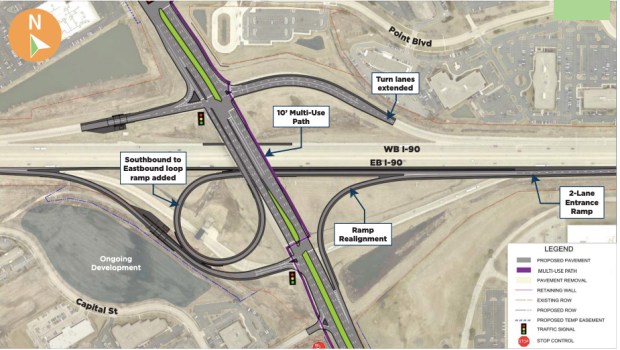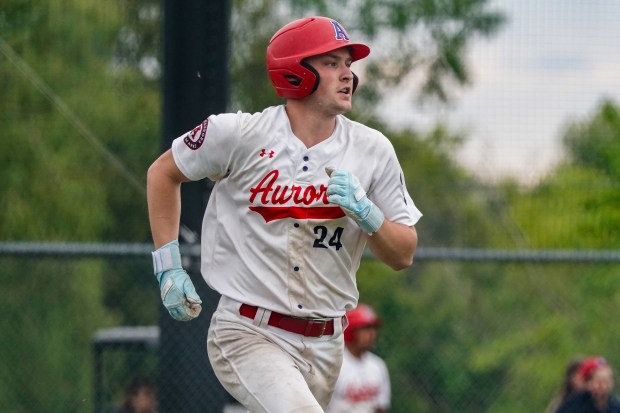A preliminary plan to ease traffic congestion and reduce crashes on Randall Road at Interstate 90 interchange in Elgin would expand the roadway to six lanes in both directions and add a loop ramp onto eastbound I-90, according to the Kane County Division of Transportation.
The work also would include reconstructing the bridge over I-90 and making the northbound and southbound ramps free flow to increase capacity and decrease backups, said Mike Zakosek, KDOT’s assistant county engineer.
“Making these movements free flow will allow the remainder of the vehicles to experience less delay as they move through the corridor,” Zakosek said.
“This corridor sees up to 50,000 vehicles per day with future projections up to 65,000 vehicles per day,” he said. “Drivers experience significant delays moving through the corridor and getting onto and off the tollway. The project will improve traffic flow, lessen delays and improve safety,” he said.
However, construction is still several years away.
Work on the project’s first phase, involving environmental studies and preliminary engineering, should be complete next year, Zakosek said. Phase II is final design engineering and land acquisition, which could take two to four years, followed by construction, the last phase estimated to take another two to four years.
The improvements will reduce travel time and traffic congestion but should also lower the high number of rear-end crashes that occur as vehicles enter and exit I-90 from Randall Road, officials said. Safety will be a top priority in the final plan they approve, Zakosek said.
Preliminary work on the plan actually started in 2019, when division staff started looking at traffic patterns, considering various problem solutions, initiating environmental studies and initiating public outreach efforts, he said.
There isn’t a cost estimate for the project yet, Zakosek said.
With the initial design now revealed, engineers will start refining it and coming up with a projected pricetag. The county has not secured any funding for the project, which is imperative if they’re to start its next phase, he said.
“We will be checking multiple (funding) avenues,” Zakosek said. “Large projects like this are usually built using several different funding sources. Once we have the phase one design complete, we can better determine what funding sources are most appropriate and pursue those.”
Such projects are usually funded through a mix of federal, Illinois Tollway, state and local money, he said.
Gloria Casas is a freelance reporter for The Courier-News.





